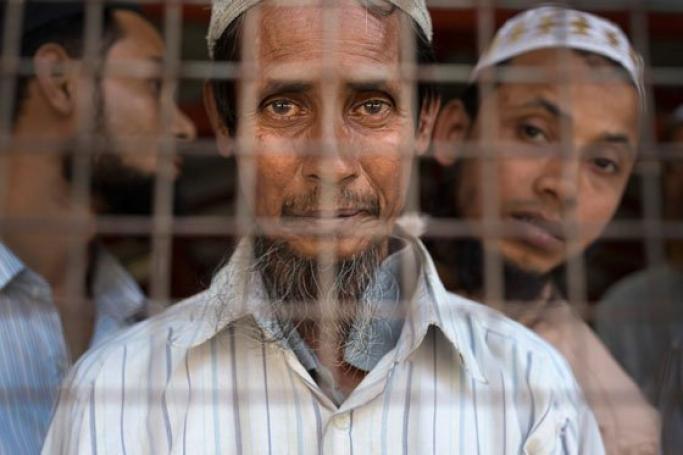Thirty bodies said to belong to Rohingya and Bangladeshi migrants were discovered in southern Thailand on May 1 as global concern and awareness grows over what some claim are the makings of “genocide” in Myanmar’s western Rakhine State.
According to Human Rights Watch, a joint Thai military-police taskforce found the bodies at an abandoned human trafficking camp. They were buried in shallow graves while others weren’t even buried at all, covered with clothes and blankets on the jungle canopy floor by human traffickers. The people were said to have died from starvation and disease.
The majority of Rohingya people flee from Myanmar in search of a better life but get caught in the net of human traffickers and at times are forced into slavery.
Human Rights Watch says the bodies were discovered in Thailand’s Songklha province in the country’s unruly south, a region troubled by human trafficking and separatism.
Asia director of Human Rights Watch, Brad Adams, had this to say:
“The finding of a mass grave at a trafficking camp sadly comes as little surprise. The long involvement of Thai officials in trafficking means that an independent investigation with UN involvement is necessary to uncover the truth and hold those responsible to account.”
Trafficking in Thailand has been out of control for some time with the current and previous administrations preventing the UN High Commission for Refugees from properly determining numbers of Rohingya moving through the country.
This latest news comes in the wake of a detailed report from the United States Holocaust Museum outlining the current situation in Rahkine State where Rohingya are displaced in what they termed “apartheid style camps” and basic rights are denied.
Concerned that “many preconditions for genocide are already in place,” members of the museum’s Simon-Skjodt Center for the Prevention of Genocide recently travelled to Myanmar to hear first-hand accounts of the Rohingya’s suffering.
According to the members: “We met with forcibly displaced people living in makeshift internment camps and ghettos, where they are cut off from their jobs and essential services, segregated from their former neighbours, and closely monitored by the police.
“We also spoke with activists, politicians, religious leaders, and journalists to get a sense of the overall situation and prospects for the future,” the group reported.
An outbreak of violence in 2012 saw Muslim Rohingya and Rakhine Buddhists killed in the state, with many Rohingya forced to live in camps for internally displaced people.
The Simon-Skjodt Center for the Prevention of Genocide report noted particular events such as:
The retraction of the population’s ‘white cards’, which offer a form of temporary identification and the right to vote; the widespread hate speech against Muslim and Rohingya people; and the temporary ban on Médecins Sans Frontières operating in Rakhine State.
Recommendations from the report noted that the government should investigate attacks against Rohingya and repeal the 1982 citizenship law preventing Rohingya from applying for citizenship.
The Myanmar government refers to the people as “Bengali,” inferring they are illegal immigrants from Bangladesh. Many Rohingya claim they were born in Myanmar and have family roots there.
The report called for the international community to impose UN sanctions on those who are targeting the ethnic minority and Muslim groups.
The report stated, “The longstanding persecution of the Rohingya Muslim minority in Myanmar has led to the highest outflow of asylum seekers by sea since the US war in Vietnam.”
ASEAN Parliamentarians for Human Rights met last week, before the ASEAN meetings in Malaysia, and drew attention to the crisis in Myanmar noting that the situation has all the signs of “genocide,” noting that it was a regional issue.
You are viewing the old site.
Please update your bookmark to https://eng.mizzima.com.
Mizzima Weekly Magazine Issue...
14 December 2023
Spring Revolution Daily News f...
13 December 2023
New UK Burma sanctions welcome...
13 December 2023
Spring Revolution Daily News f...
12 December 2023
Spring Revolution Daily News f...
11 December 2023
Spring Revolution Daily News f...
08 December 2023
Spring Revolution Daily News f...
07 December 2023
Diaspora journalists increasin...
07 December 2023
School teachers to help at polling stations in Myeik












